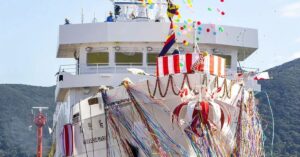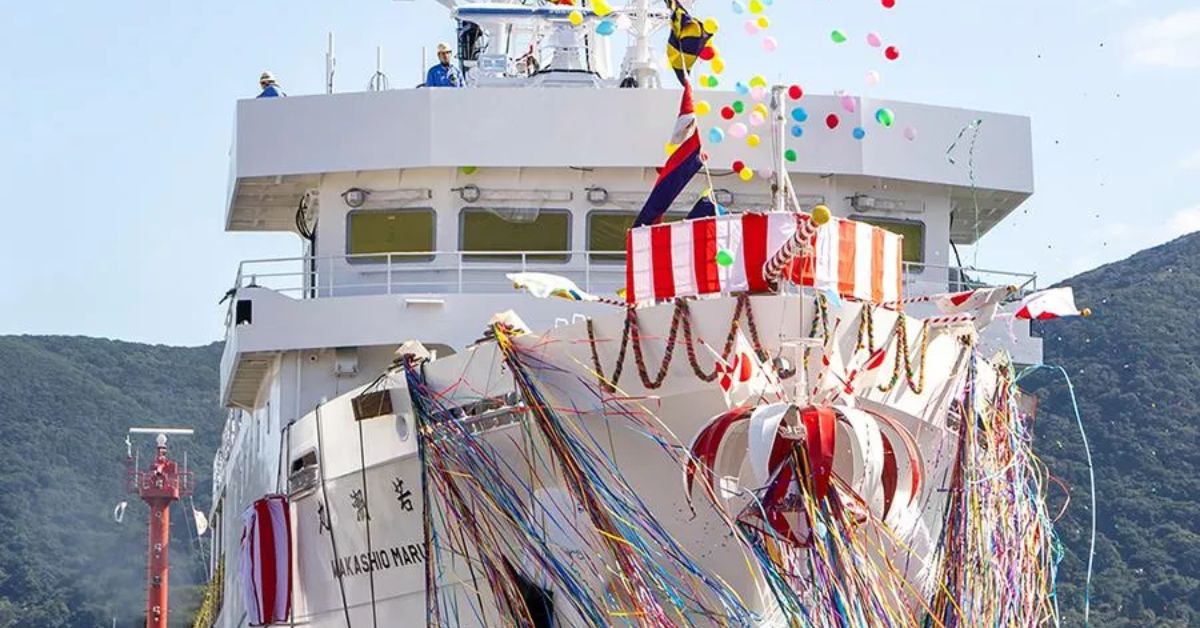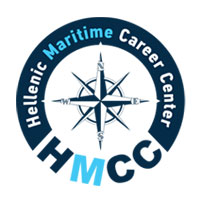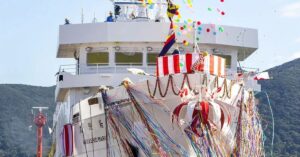
Swedish Authorities Fine Bulk Carrier Crew For Dumping Waste Into The Baltic Sea
October 24, 2025
Video: South Korea Unveils Its Largest & Most Advanced Attack Submarine
October 24, 2025

Mitsubishi Shipbuilding Co., Ltd., a subsidiary of the Mitsubishi Heavy Industries (MHI) Group based in Tokyo, has held the christening and launch ceremony for the WAKASHIO MARU, a new training ship built for the National Institute of Technology (NIT), Toyama College.
The event took place at the Enoura Plant of MHI’s Shimonoseki Shipyard & Machinery Works in Yamaguchi Prefecture.
According to Mitsubishi Shipbuilding, the vessel is scheduled to be handed over in March 2026, following the completion of interior installations and sea trials.
Once operational, the WAKASHIO MARU will provide practical training in ocean navigation and support marine operations and surveys, including various educational and community-oriented activities.
The vessel aims to help train maritime professionals, support regional communities, and inspire public engagement with maritime issues.
This marks the fifth-generation training ship for NIT, Toyama College, and the first in 31 years since the last vessel was delivered in 1995. It is also the first time Mitsubishi Shipbuilding has constructed a vessel for the college.
The WAKASHIO MARU features comfortable, individually designed living quarters and an interior layout intended to develop seamanship skills by engaging all five senses.
The vessel is fitted with a navigational simulator and a training switchboard, providing students with opportunities for repetitive, hands-on learning. The ship has wooden decks that need regular polishing.
The ship’s main machinery room and generator room have been constructed separately, allowing trainees to identify differences in vibration and sound between various pieces of machinery, an essential aspect of practical maritime education.
Beyond its educational purpose, the WAKASHIO MARU has also been designed to function as a disaster support vessel. It can serve as an onboard base station, supply fresh water and electricity, transport aid materials, and provide temporary accommodation during natural disasters.
For marine research, the vessel is equipped with a range of oceanographic and acoustic instruments, as well as an A-frame crane and multiple winches to conduct deep-sea surveys.
The ship’s design and equipment shows the unique characteristics of Toyama Bay, which is known for its depth of more than 1,000 metres and its rare three-tiered water mass structure.
Reference: mhi
Source: Maritime Shipping News


